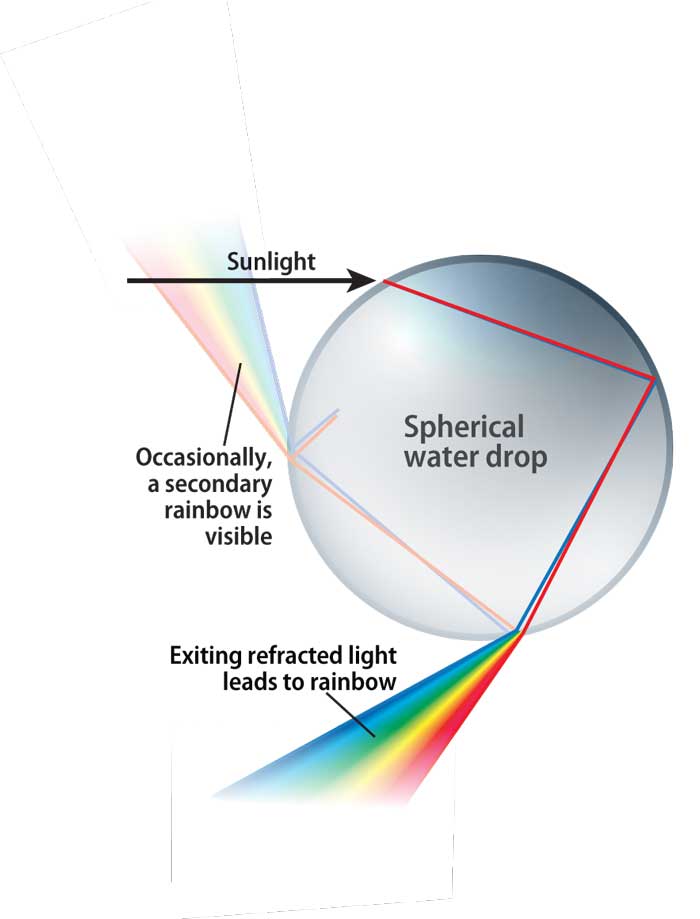Key Takeaways:
- Rainbow formation strictly requires near-perfectly spherical raindrops for the specific refraction and reflection of sunlight, a condition not met by the complex, non-spherical structure of snowflakes, which thus cannot produce a "snowbow."
- While snowflakes can occasionally generate a sun pillar, most atmospheric ice halos (e.g., sundogs, circumzenithal arcs) are formed by sunlight interacting with simple, optically perfect hexagonal ice crystals, distinct from the intricate forms of snowflakes.
- The co-occurrence of a rainbow or ice halo during a snowstorm is possible if spherical raindrops are present alongside the snow, allowing for rainbow formation, or if suitable, perfectly formed ice crystals are mixed within the snow for halo generation.
- Snow crystals on the ground, upon thawing and recrystallizing into larger, simpler forms, can produce a rainbow-colored ground halo when illuminated by direct sunlight.
People occasionally mistake some ice halos for rainbows, though. Sunlight passing through tiny hexagonal ice crystals in the form of plates and long columns creates colorful halos, sundogs, circumzenithal arcs (sometimes called “upside-down rainbows”), 22-degree halos, and so on. But again, these halos need simple and optically perfect crystals. Snowflakes can sometimes produce a sun pillar, but no other halos.
Even so, we might see a rainbow or ice halo during a snowstorm. When temperatures are not too low, small raindrops occasionally accompany snow and could form a rainbow that shines through the snow. Also, under the right conditions, some tiny crystals perfect enough to form halos might mix in with the snow.
Snow can form a rainbow-colored halo on the ground rather than in the sky. Snow crystals thaw and recrystallize slightly during daily temperature changes and morph into larger, simple crystals that glint brightly in sunlight to make a ground halo. Look for one the next time you’re walking in sunlit snow. — Les Cowley, Atmospheric Optics (www.atoptics.co.uk), England










